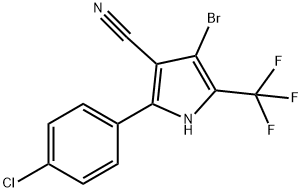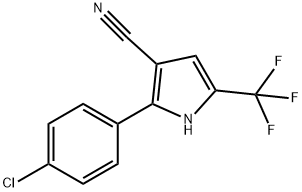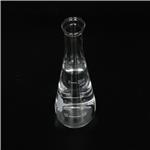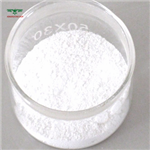Description
Tralopyril (TP) is a biocide that
has recently been introduced
into marine antifouling paints,
applied to boat hulls or static
structures such as oil rig and
drilling platform legs, which
are submerged under water.
preparation
Tralopyril is an important intermediate in the synthesis of carbofuran, and bromine is the core raw material for the synthesis of Tralopyril. Tralopyril is a pyrrole resulting from the N-dealkylation of the ethoxymethyl group of chlorfenapyr. Chlorfenapyr is the first commercial proinsecticide developed by introducing ethoxymethyl group into the pyrrole N of tralopyril.
Uses
N-Deethoxymethyl Chlorfenapyr is a primary metabolite of Chlorfenapyr (C428500). Chlorfenapyr is a halogenated pyrrole based pro-insecticide. Chlorfenapyr functions by metabolizing into an active insecticide after entering the host. Chlorfenapyr is used primarily as a means of pest control on cotton.
Definition
ChEBI: Tralopyril is a pyrrole resulting from the N-dealkylation of the ethoxymethyl group of chlorfenapyr. It is the active insecticide of the proinsecticide chlorfenapyr. It has a role as an acaricide, an insecticide and an antifouling biocide. It is an organochlorine acaricide, an organochlorine insecticide, an organofluorine acaricide, an organofluorine insecticide, a member of pyrroles, a nitrile, a member of monochlorobenzenes and an organobromine compound.
Application
Tralopyril was developed as a marine antifouling agent for use in antifouling coatings. The compound has been registered with the US EPA since 2007. Since then, a range of marine coatings have been developed utilizing tralopyril for control of barnacles and other invertebrate animal fouling organisms, frequently, but not exclusively, in combination with a soft fouling control agent.
Synthesis
Tralopyril is a pyrrole resulting from the N-dealkylation of the ethoxymethyl group of chlorfenapyr.





